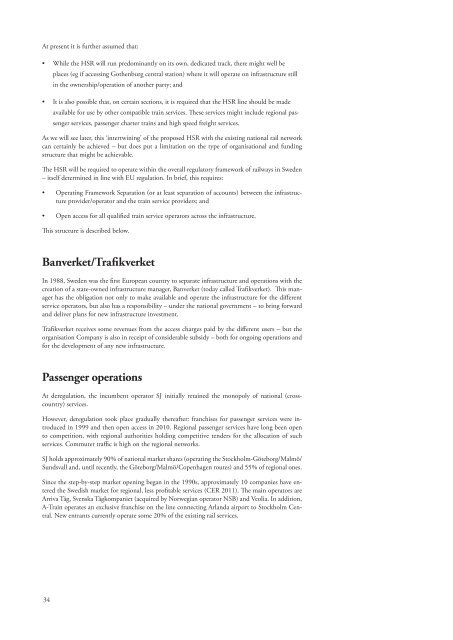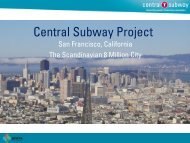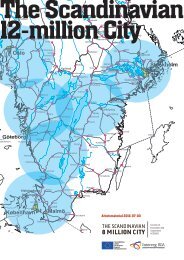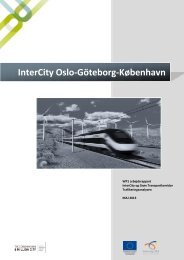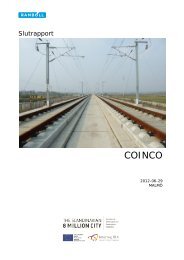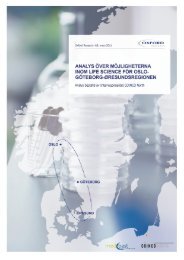Last ned The Scandinavian 12 million City - 8millioncity
Last ned The Scandinavian 12 million City - 8millioncity
Last ned The Scandinavian 12 million City - 8millioncity
- No tags were found...
You also want an ePaper? Increase the reach of your titles
YUMPU automatically turns print PDFs into web optimized ePapers that Google loves.
At present it is further assumed that:• While the HSR will run predominantly on its own, dedicated track, there might well beplaces (eg if accessing Gothenburg central station) where it will operate on infrastructure stillin the ownership/operation of another party; and• It is also possible that, on certain sections, it is required that the HSR line should be madeavailable for use by other compatible train services. <strong>The</strong>se services might include regional pas-senger services, passenger charter trains and high speed freight services.As we will see later, this ‘intertwining’ of the proposed HSR with the existing national rail networkcan certainly be achieved – but does put a limitation on the type of organisational and fundingstructure that might be achievable.<strong>The</strong> HSR will be required to operate within the overall regulatory framework of railways in Sweden– itself determi<strong>ned</strong> in line with EU regulation. In brief, this requires:• Operating Framework Separation (or at least separation of accounts) between the infrastructureprovider/operator and the train service providers; and• Open access for all qualified train service operators across the infrastructure.This structure is described below.Banverket/TrafikverketIn 1988, Sweden was the first European country to separate infrastructure and operations with thecreation of a state-ow<strong>ned</strong> infrastructure manager, Banverket (today called Trafikverket). This managerhas the obligation not only to make available and operate the infrastructure for the differentservice operators, but also has a responsibility – under the national government – to bring forwardand deliver plans for new infrastructure investment.Trafikverket receives some revenues from the access charges paid by the different users – but theorganisation Company is also in receipt of considerable subsidy – both for ongoing operations andfor the development of any new infrastructure.Passenger operationsAt deregulation, the incumbent operator SJ initially retai<strong>ned</strong> the monopoly of national (crosscountry)services.However, deregulation took place gradually thereafter: franchises for passenger services were introducedin 1999 and then open access in 2010. Regional passenger services have long been opento competition, with regional authorities holding competitive tenders for the allocation of suchservices. Commuter traffic is high on the regional networks.SJ holds approximately 90% of national market shares (operating the Stockholm-Göteborg/Malmö/Sundsvall and, until recently, the Göteborg/Malmö/Copenhagen routes) and 55% of regional ones.Since the step-by-step market opening began in the 1990s, approximately 10 companies have enteredthe Swedish market for regional, less profitable services (CER 2011). <strong>The</strong> main operators areArriva Tåg, Svenska Tågkompaniet (acquired by Norwegian operator NSB) and Veolia. In addition,A-Train operates an exclusive franchise on the line connecting Arlanda airport to Stockholm Central.New entrants currently operate some 20% of the existing rail services.34


